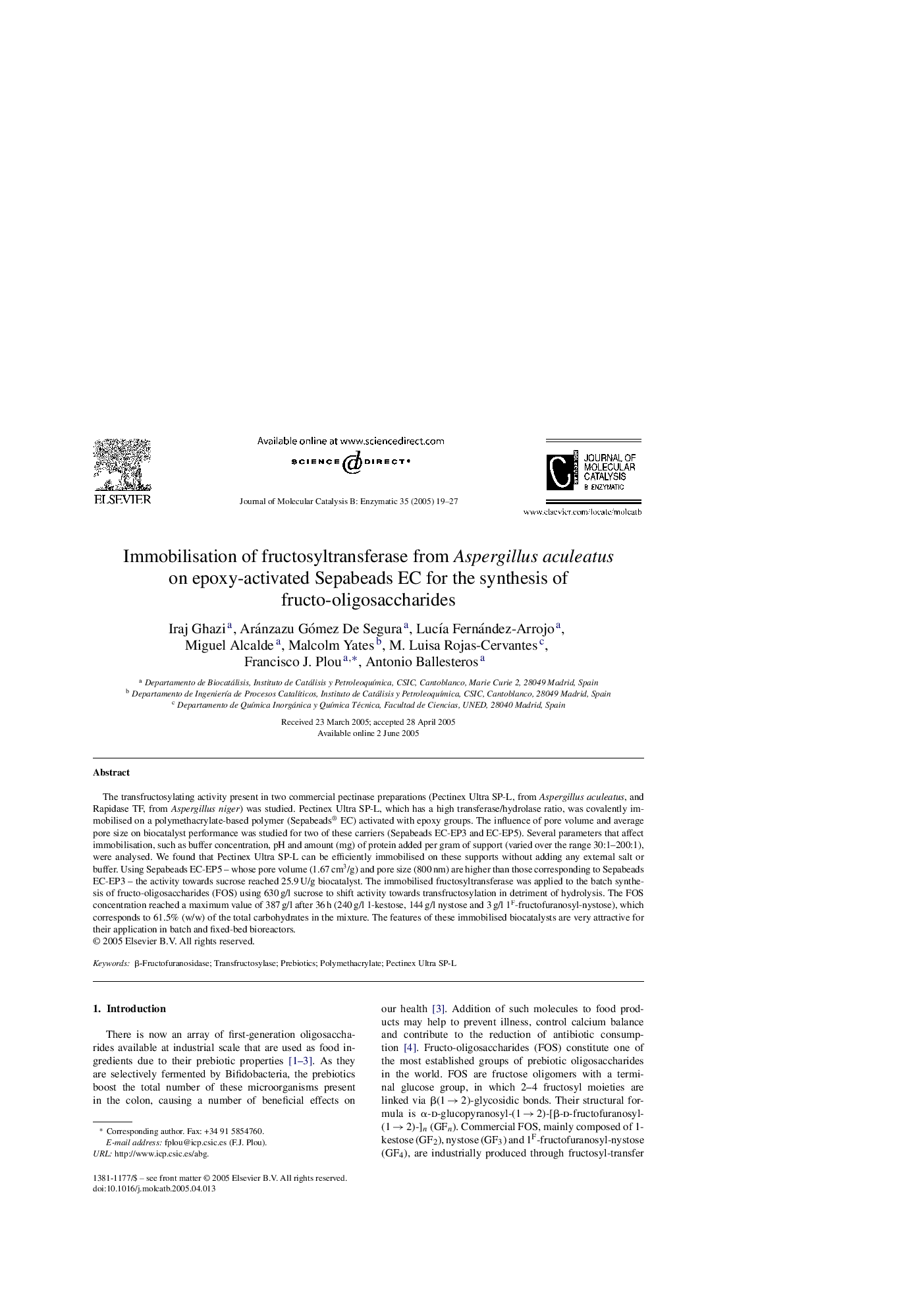| Article ID | Journal | Published Year | Pages | File Type |
|---|---|---|---|---|
| 9616748 | Journal of Molecular Catalysis B: Enzymatic | 2005 | 9 Pages |
Abstract
The transfructosylating activity present in two commercial pectinase preparations (Pectinex Ultra SP-L, from Aspergillus aculeatus, and Rapidase TF, from Aspergillus niger) was studied. Pectinex Ultra SP-L, which has a high transferase/hydrolase ratio, was covalently immobilised on a polymethacrylate-based polymer (Sepabeads® EC) activated with epoxy groups. The influence of pore volume and average pore size on biocatalyst performance was studied for two of these carriers (Sepabeads EC-EP3 and EC-EP5). Several parameters that affect immobilisation, such as buffer concentration, pH and amount (mg) of protein added per gram of support (varied over the range 30:1-200:1), were analysed. We found that Pectinex Ultra SP-L can be efficiently immobilised on these supports without adding any external salt or buffer. Using Sepabeads EC-EP5 - whose pore volume (1.67Â cm3/g) and pore size (800Â nm) are higher than those corresponding to Sepabeads EC-EP3 - the activity towards sucrose reached 25.9Â U/g biocatalyst. The immobilised fructosyltransferase was applied to the batch synthesis of fructo-oligosaccharides (FOS) using 630Â g/l sucrose to shift activity towards transfructosylation in detriment of hydrolysis. The FOS concentration reached a maximum value of 387Â g/l after 36Â h (240Â g/l 1-kestose, 144Â g/l nystose and 3Â g/l 1F-fructofuranosyl-nystose), which corresponds to 61.5% (w/w) of the total carbohydrates in the mixture. The features of these immobilised biocatalysts are very attractive for their application in batch and fixed-bed bioreactors.
Related Topics
Physical Sciences and Engineering
Chemical Engineering
Catalysis
Authors
Iraj Ghazi, Aránzazu Gómez De Segura, LucÃa Fernández-Arrojo, Miguel Alcalde, Malcolm Yates, M. Luisa Rojas-Cervantes, Francisco J. Plou, Antonio Ballesteros,
